Photo courtesy of the artist

interview
Meet Stephanie Economou, The First-Ever GRAMMY Winner For Best Score Soundtrack For Video Games And Other Interactive Media
In a victory for the video game music community, Stephanie Economou took home the first-ever GRAMMY in that brand-new category for her soundtrack to 'Assassin's Creed Valhalla: Dawn of Ragnarök.'
Stephanie Economou was so certain she wouldn't win a GRAMMY, that she sat near the back of the auditorium.
The video game soundtrack composer was nominated for the inaugural Best Score Soundtrack For Video Games And Other Interactive Media award for her score to "Assassin's Creed Valhalla: Dawn of Ragnarök" — a lavish expansion of the latest entry in Ubisoft's series of historically inspired action role-playing games.
"I was up against titans in the video game composing industry, so I was just happy to be nominated and happy to be there," Economou tells GRAMMY.com. But despite the heavy competition — Austin Wintory for "Aliens: Fireteam Elite," Bear McCreary for "Call of Duty Vanguard," other industry juggernauts — the golden gramophone was hers.
From rows and rows deep, Economou dashed to the stage feeling more than a little conflicted. "I was experiencing a lot of impostor syndrome," she says. "I'm still pretty new to this, and I was like, Did I earn this? Do I deserve this?"
It was Wintory, who Economou characterizes as "very, very, very well-known," who set her self-doubting mind at ease: "It's absurd to even question why you're here," he told her, from her recollection. "The music is great, and what you represent is something important."
The soundtrack to "Assassin's Creed Valhalla: Dawn of Ragnarök" isn't just high-quality; it's immersive, evocative and boundary-pushing. Taking cues from neofolk, Nordic folk and black metal, Economou employed a diverse palette of instruments — synthesizers, lap harp, viola da gamba, et al — to make the open-world RPG evermore captivating and transportive.
Economou opened up to GRAMMY.com about her creative journey through the worlds of film and TV, the manifold inspirations behind the "Dawn of Ragnarök" score, and her hope that this new GRAMMY Award will grant the video game music community the esteem it deserves.
This interview has been edited for clarity.
I imagine there's a degree of aristocracy in the video game scoring community, as there is in many subcultures. If so, was there a feeling upon receiving this GRAMMY that it's giving way a tad?
Yeah, I think there was. Truly, whoever won this category, it was going to be a huge celebration, because it's such a win to even have the validation from the Recording Academy to have video games as their own thing. So, regardless of who won, it was always going to be somebody who I think has earned a level of respect in the industry.
But I do think there is something to be said potentially for the fact that: yes, I am younger, and I am slightly newer to games. Maybe that balance is shifting where people are connecting with creators who are coming at this with a different lens and have something slightly different to say.
I just think that as a composer, I represent something different from what much of this industry can be — which is not better or worse, it’s just another perspective. And sometimes people can be attracted to what that diversity can bring.
Tell me about your early inspirations and what drew you to this medium.
I grew up playing violin and piano, and I pursued in college specifically concert music. So, I didn't score my first short film until I was in college at New England Conservatory, which is a music-only school.
There was just something there that clicked with me. I loved the collaborative process, working with a filmmaker who was really challenging me to try things out of my comfort zone. I grew up loving a lot of music. I grew up loving orchestral music because it's what I was playing in school. Most of all, I grew up loving classic rock, and just the rock genre — punk, metal, things like that. So, I have a lot of different, very, very eclectic influences, which I think is what made it so exciting to write music that felt genuine to me.
But I thought that film music and scoring for media in particular offered this really rare opportunity to potentially harness all of those influences that I loved from growing up — just putting them in a blender and seeing what comes out.
Depending on the project you’re working on, too — you could be working on a period drama where you have to study baroque music, or you could be working on an Assassin’s Creed game and someone says they want to do a black metal score. That’s pretty much exactly what happened. So, I love the challenge that’s built into this work.
*Stephanie Economou. Photo courtesy of the artist.*
Tell me how your career ramped up to "Assassin's Creed Valhalla: Dawn of Ragnarök." What games did you work on prior to this title?
I mainly just worked in film and TV. Video games are still a pretty new thing for me.
But when I moved out to LA to start working in the industry, I got pretty lucky and ended up working for a composer named Harry Gregson-Williams, who is very well-known and respected. He composed for Shrek and Chicken Run and The Equalizer and Mulan, and had a bunch of huge, really different films.
So, I cut my teeth with him for six years and was writing on his scores and just being a part of his team, and that's pretty much where I learned everything. I got my credits writing additional music on his projects.
And when I went out on my own, I was looking to get offered a Netflix TV series called "Jupiter's Legacy," which I think was a big catalyst for making an imprint with Netflix in particular, and with other people who really enjoyed that show.
From there, I've been doing lots of different work — documentary work, feature films, animations, a lot of different stuff. I instantly forget every single project I've ever done when anybody asks me this question, but there are lots of things that were propelled forward.
And then, Ubisoft called and said they were looking for a composer they hadn't worked with before — someone who didn't necessarily have game experience — and they asked someone to demo for this DLC [downloadable content] for "Assassin's Creed Valhalla" called "The Siege of Paris." That was my first intro to video game music.
So, I demoed for that, I got that job, and then the following expansion was "Dawn of Ragnarök," so they asked me if I could do that one.
What are some of the specific procedures involved in scoring a video game? What mental space do you need to occupy to write music for games as opposed to the other mediums you've worked in?
In film and TV, those stories are fixed. So, even though they might be editing throughout the time you're writing the music, they're still linear. Video games are nonlinear and interactive with the player, so the music is very alive. It's almost communicating with the player as they're going through the story.
When you're composing the music for something like that, you're kind of designing it as well. So, you need to have an awareness of: OK, even though this track is three minutes long, the player could be in this space for an hour.
Or they could happen upon a danger or tension area, and you need to design layers on top of a base layer that could be triggered at any moment, that can give them that rush or feeling of uneasiness. And then you could have a fight break out, and it's all sort of modular building blocks.
But the biggest challenge that comes with something like that where there are so many moving parts musically, is that you still need to make sure that it's not just the same thing looping over and over again.
The music needs to have shape and a theme, and it can have harmony and modulate, and each of the layers can play with the rudiments of tempo. You can play with double time and half time and triplets and subdivisions that can play into that intensity, but in a very carefully designed way.
So, there are a lot of levels of awareness that need to go into composing something that is interactive and nonlinear, which I think is a really fun challenge. But coming into games and being newer to it, there was a steeper learning curve.
I think that's the challenge with it — making a piece feel really musical and gripping, but being able to do all of those very specific technical things at the same time.
How would you characterize your personal stamp on whatever score you create?
I'm truly bad at recognizing what I think my signature is, because I think it's ever-evolving. But I do think that I try to bring an edge, or something a little bit risk-taking, into all of the music that I make.
I really don't like the idea of writing the same cue more than once, even though sometimes that's what we have to do for the job. I really like the idea that not one of my scores sounds like another one. That's not specific, but process-wise, I get excited by projects that can allow me to do something I haven't done before.
I feel like the space of video games is especially encouraging for taking those kinds of risks, and working with Ubisoft, that's definitely what they were doing. At every turn, they were like, Push it further, get more experimental, get less expected. And I love that. I love playing with the expectation of the listener and redefining what people consider to be game music.
Tell me more about how you incorporated the building blocks of black metal in the "Assassin's Creed Valhalla" score — grainy production, tremolo picking, a symphonic sweep.
The black-metal thing came as a suggestion from one of the game developers very, very early in the process. I love metal music, but I had never studied the black-metal subgenre in particular. So, I looked into that stuff.
My first protocol was finding musicians who were really well-versed in that. I found this band called Wilderun; Wayne Ingram is the lead guitarist. He was one of the biggest collaborators on this project, and he introduced me to Heilung and Wolves in the Throne Room and all these amazing black-metal and neo-folk bands.
"Assassin's Creed Valhalla" also has this Nordic folk influence, which is something I wanted to tie into "Dawn of Ragnarok." There's actually a lot of musical overlap, I would say, between Nordic folk and black-metal. Even if it's coming from a rustic, primitive way, it's very cinematic. You can have these symphonic sorts of influences with distorted guitars and really punchy drums and blast beats and growly vocals and stuff.
So, it all ends up tying together, but getting the right temperature for each of the stylistic influences was a challenge. So, dialing in that black metal and some of those performances from the soloist… it wasn't hard, but it was definitely something that I had to pay very close attention to [in order] to make sure that I was really nailing it.
It was super fun. I never thought I was going to be able to write a black-metal influenced score, but the best part of it was being able to collaborate with these musicians. It was just a really amazing, fruitful experience.
Tell me about your other collaborators on this soundtrack.
Ari Mason is another one of the soloists. She was a vocalist and played viola da gamba on the score too. She put off this really fresh Nordic folk, neofolk energy to the whole score, which was really amazing.
I got a tagelharpa, which was really, really difficult to play, but cool to just gather. I tend to collect instruments based on the project that I'm working on. So, I recorded on that and experimented with a lap harp, which was really fun, and then recorded with a bunch of different string instruments.
And then, we put some synths in there, because, as you probably know too, black metal and neofolk, it's very uniquely ambient and textural as well, So even though there can be these big black-metal moments, there's a lot of heavily curated ambience and textural stuff going on in there too.
That's the most fun stuff for me. That's something that I feel like lives in most of my music, regardless of the style.
Prior to your black-metal immersion, what are some other formative influences that made their way into your work?
So, I grew up listening to System of a Down, and Toxicity is probably still one of my favorite albums of all time. I listen to it [chuckles] a lot. I do feel like there were some times when it was tipping more into System of a Down, and Ubisoft was like, "I think we're departing a little too far from black metal!"
Pink Floyd is probably my favorite band of all time, and Animals is my favorite album. There's things in that music where I can look back at my own music and say, "Oh wow, there's something in there that does remind me a bit of Animals," or a bit of this, a bit of that. I used to listen to Blink-182 and stuff from my childhood that brings me a lot of joy still. And then newer stuff like Patrick Watson and Father John Misty.
I try to just listen to new music whenever I can — which, truth be told, I struggled with for a long time, because working in music and doing music all day, sometimes you just feel really inundated and don't want to listen to anything else.
So, I sort of struggled with that for a while. But now, every morning, I come into the studio and go on YouTube and just listen to different things that I have never heard of before, and I think that's a really inspiring way to start the day.
*Stephanie Economou. Photo: Claus Morgenstern*
With this GRAMMY in hand, where do you want to creatively venture next?
I would just love to keep working with these amazing creators in the video game space and keep doing more film and TV projects. I always strive to work with storytellers who are saying something different and being innovative, and people who are going to want music that opens a different dimension for the viewer and the audience.
I do feel like games are the most direct way into that world for listeners. I think it's all art, really.
Can you talk about the subculture of video game scorers, positive or negative? What would you do to change it if you could?
I think we've all read about how some of these video game companies can be very toxic working environments, and in particular for women. I have to say that my experience as a woman composer in the video game music space is that I have only been supported by these game companies, and it's been a really lovely, encouraging space to make music. Then, I would say the video game composing community is really great too.
I really appreciate this community of composers. We're all just putting our heads down and doing the work. But ultimately, I think that the amount of diverse voices in video games is a bigger population as compared to film and TV. I think game companies are more apt to hire women composers, and video game composers are super-accepting and a generally diverse group of people.
I'm really lucky to be here, and I've only felt support from my fellow artists in this world. So, I would say all good stuff, but maybe ask me in 10 years and I'll have some more stories.
With the initiation of this GRAMMY category, do you feel like the video game music world might get more of the respect that it deserves?
I'd f—ing hope so, man. It's so crazy that it did take this long to recognize video game music on its own.
There are some people I talk to who aren't really even gamers or don't really understand how exciting the video game medium is. They're like, "Oh, wow, it's really a sign of the times that video game music is being recognized." It's like, we've been here for decades.
I think it's well overdue, especially because gamers really, really listen to this music. I grew up gaming and I still do now, and there's something about hearing those scores that I grew up with from these games; it elicits this very visceral memory. It sets you in a place and time and it's a very deep-seated thing.
I love film soundtracks too, but I don't get that same overwhelming thrill when I listen to the music for a film soundtrack as I do for a game soundtrack. If I hear the theme for "Halo," it's like I'm overcome, and I think there's something to be said for that.
I think people who live in these narratives in video games really want to listen to the music again and re-experience the excitement of that story just by listening to the soundtrack alone. It defines this little slice of time that they enjoyed this game and fought through it. It's just a really special experience.
So, I think it's well-timed that game music is recognized, because it really does offer this emotionally connecting experience for the audience.
Inside Dungeon Synth: A Transportive, Atmospheric & Bracingly Earnest Realm
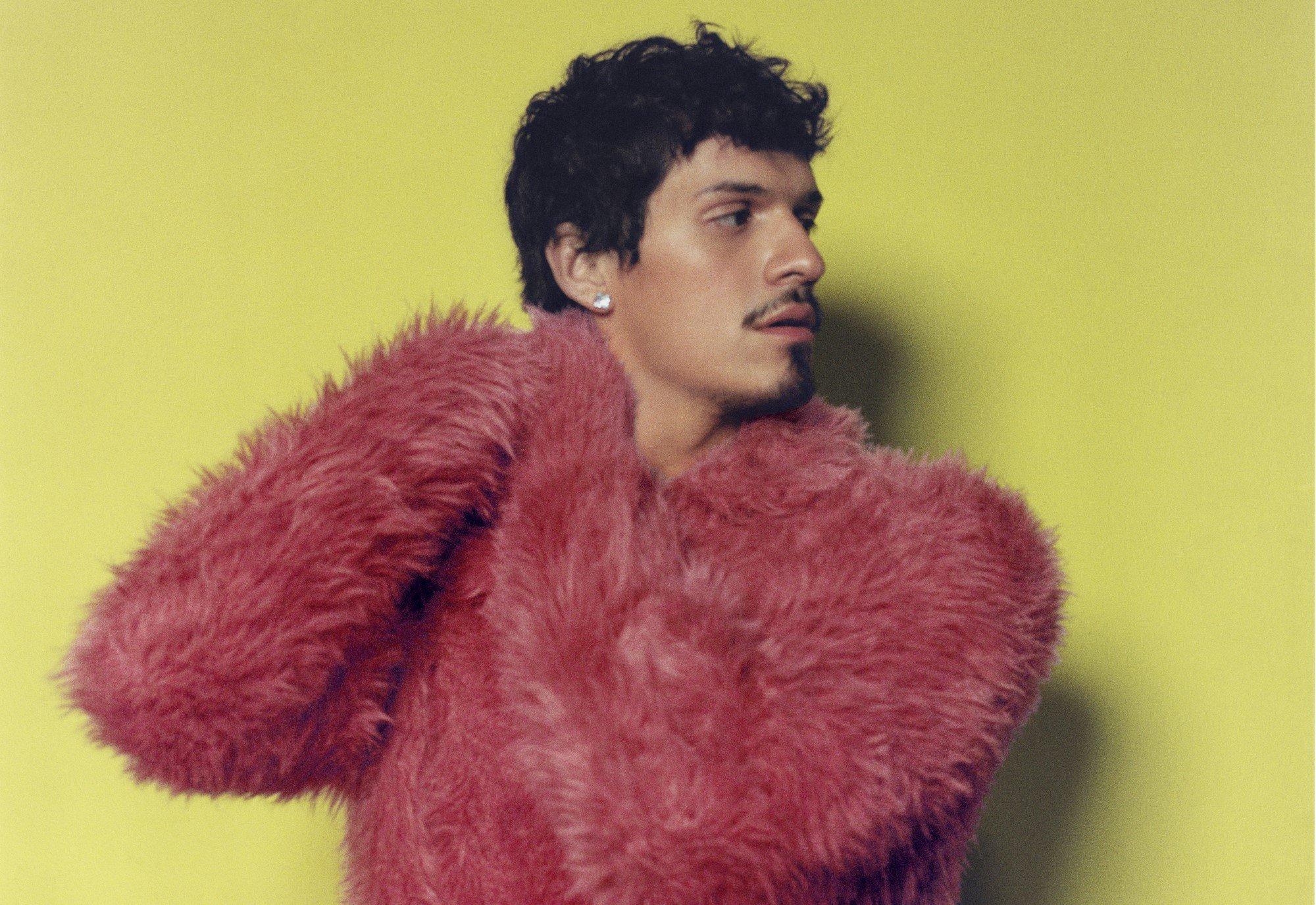
Photo: Aitor Laspiur
interview
Omar Apollo Embraces Heartbreak And Enters His "Zaddy" Era On 'God Said No'
Alongside producer Teo Halm, Omar Apollo discusses creating 'God Said No' in London, the role of poetry in the writing process, and eventually finding comfort in the record's "proof of pain."
"Honestly, I feel like a zaddy," Omar Apollo says with a roguish grin, "because I'm 6'5" so, like, you can run up in my arms and stay there, you know what I mean?"
As a bonafide R&B sensation and one of the internet’s favorite boyfriends, Apollo is likely used to the labels, attention and online swooning that come with modern fame. But in this instance, there’s a valid reason for asking about his particular brand of "zaddyhood": he’s been turned into a Bratz doll.
In the middle of June, the popular toy company blasted a video to its nearly 5 million social media followers showing off the singer as a real-life Bratz Boy — the plastic version draped in a long fur coat (shirtless, naturally), with a blinged-out cross necklace and matching silver earrings as he belts out his 2023 single "3 Boys" from a smoke-covered stage.
The video, which was captioned "Zaddy coded," promptly went viral, helped along by an amused Apollo reposting the clip to his own Instagram Story. "It was so funny," he adds. "And it's so accurate; that's literally how my shows go. It made me look so glamorous, I loved it."
The unexpected viral moment came with rather auspicious timing, considering Apollo is prepping for the release of his hotly anticipated sophomore album. God Said No arrives June 28 via Warner Records.
In fact, the star is so busy with the roll-out that, on the afternoon of our interview, he’s FaceTiming from the back of a car. The day prior, he’d filmed the music video for "Done With You," the album’s next single. Now he’s headed to the airport to jet off to Paris, where he’ll be photographed front row at the LOEWE SS25 men’s runway show in between Sabrina Carpenter and Mustafa — the latter of whom is one of the few collaborators featured on God Said No.
Apollo’s trusted co-writer and producer, Teo Halm, is also joining the conversation from his home studio in L.A. In between amassing credits for Beyoncé (The Lion King: The Gift), Rosalía and J Balvin (the Latin GRAMMY-winning "Con Altura"), SZA ("Notice Me" and "Open Arms" featuring Travis Scott) and others, the 25-year-old virtuoso behind the boards had teamed up with Apollo on multiple occasions. Notably, the two collabed on "Evergreen (You Didn’t Deserve Me At All)," which helped Apollo score his nomination for Best New Artist at the 2023 GRAMMYs.
In the wake of that triumph, Apollo doubled down on their creative chemistry by asking Halm to executive produce God Said No. (The producer is also quick to second his pal’s magnetic mystique: "Don't get it twisted, he's zaddy, for sure.")
Apollo bares his soul like never before across the album’s 14 tracks, as he processes the bitter end of a two-year relationship with an unnamed paramour. The resulting portrait of heartbreak is a new level of emotional exposure for a singer already known for his unguarded vulnerability and naked candor. (He commissioned artist Doron Langberg to paint a revealing portrait of him for the cover of his 2023 EP Live For Me, and unapologetically included a painting of his erect penis as the back cover of the vinyl release.)
On lead single "Spite," he’s pulled between longing and resentment in the wake of the break-up over a bouncing guitar riff. Second single "Dispose of Me" finds Apollo heartsick and feeling abandoned as he laments, "It don’t matter if it’s 25 years, 25 months/ It don’t matter if it’s 25 days, it was real love/ We got too much history/ So don’t just dispose of me."
Elsewhere, the singer offers the stunning admission that "I would’ve married you" on album cut "Life’s Unfair." Then, on the very next song — the bumping, braggadocious "Against Me" — Apollo grapples with the reality that he’s been permanently altered by the love affair while on the prowl for a rebound. "I cannot act like I’m average/ You know that I am the baddest bitch," he proclaims on the opening verse, only to later admit, "I’ve changed so much, but have you heard?/ I can’t move how I used to."
More Omar Apollo News & Videos

Omar Apollo Embraces Heartbreak And Enters His "Zaddy" Era On 'God Said No'
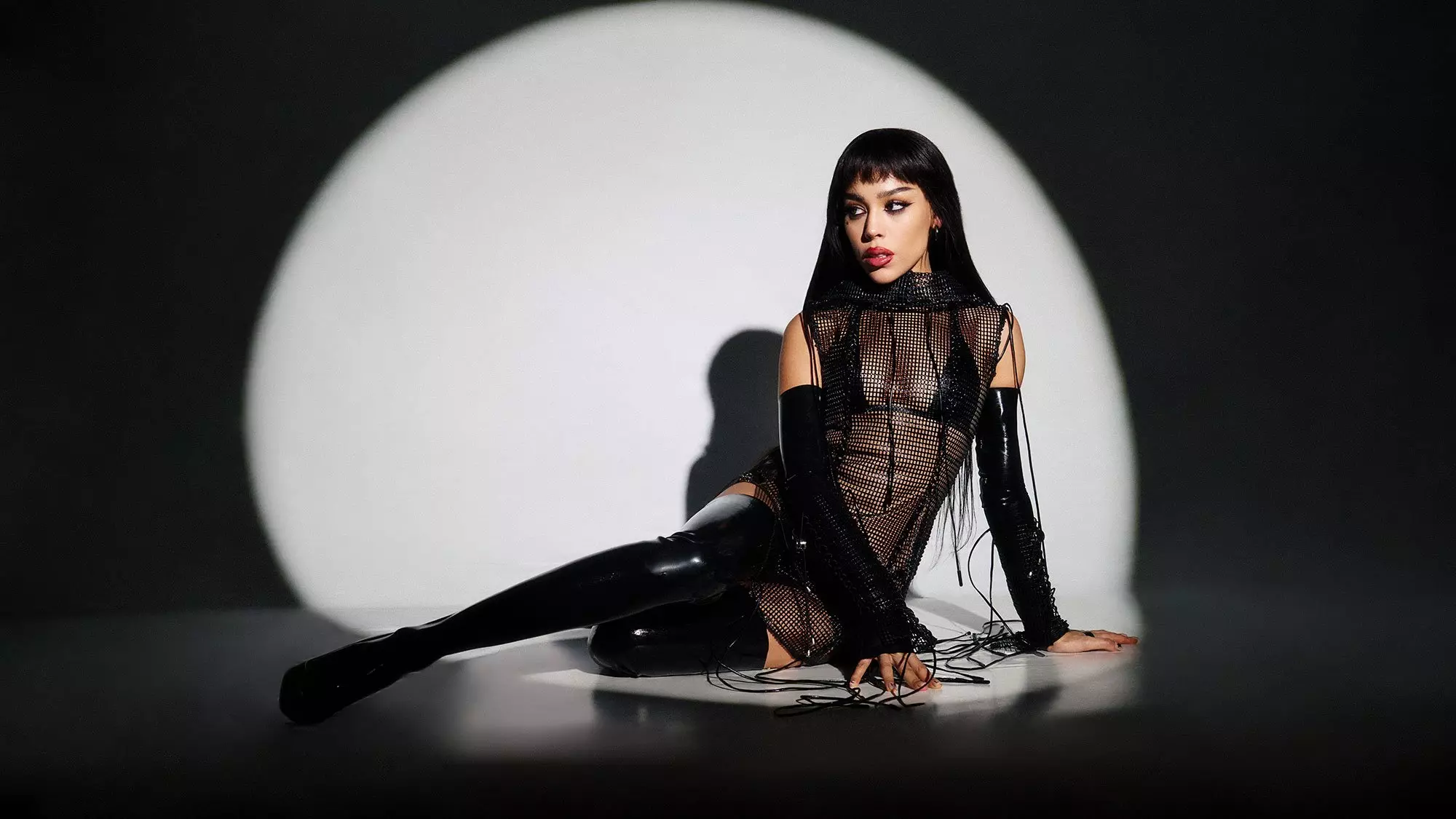
How Danna Paola Created 'CHILDSTAR' By Deconstructing Herself
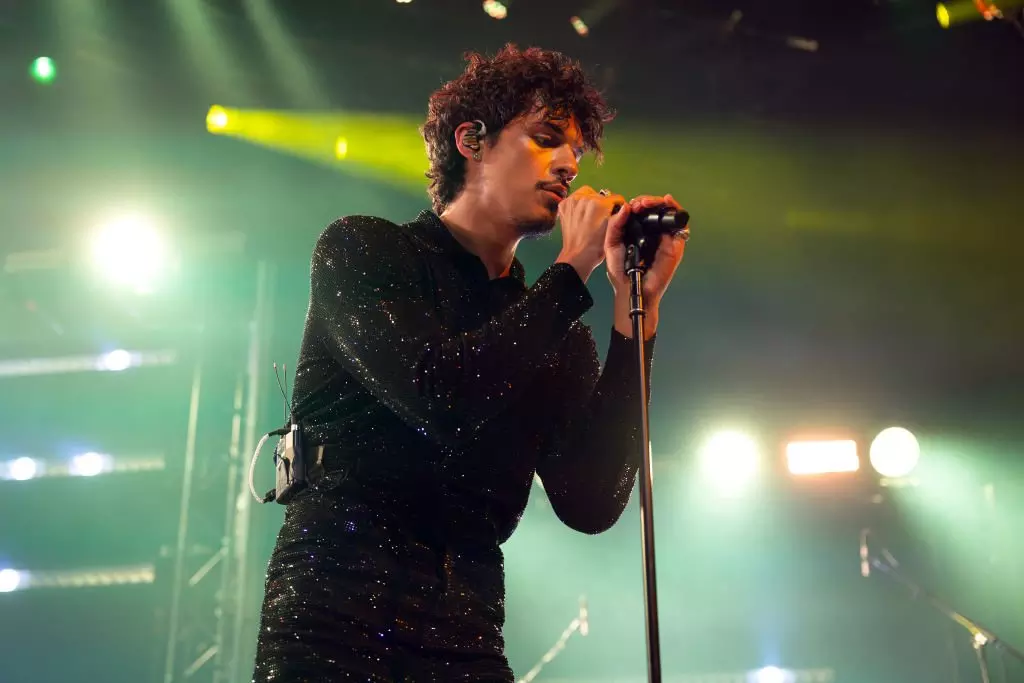
On Omar Apollo's New EP 'Live for Me,’ Limitless Experimentation Created Catharsis

Listen To GRAMMY.com's LGBTQIA+ Pride Month 2023 Playlist Featuring Demi Lovato, Sam Smith, Kim Petras, Frank Ocean, Omar Apollo & More

Omar Apollo On “Evergreen,” Growth & Longing
Given the personal subject matter filling God Said No — not to mention the amount of acclaim he earned with Ivory — it would be understandable if Apollo felt a degree of pressure or anxiety when it came to crafting his sophomore studio set. But according to the singer, that was entirely not the case.
"I feel like I wouldn’t be able to make art if I felt pressure," he says. "Why would I be nervous about going back and making more music? If anything, I'm more excited and my mind is opened up in a whole other way and I've learned so much."
In order to throw his entire focus into the album’s creation, Apollo invited Halm to join him in London. The duo set up shop in the famous Abbey Road Studios, where the singer often spent 12- to 13-hour days attempting to exorcize his heartbreak fueled by a steady stream of Aperol spritzes and cigarettes.
The change of scenery infused the music with new sonic possibilities, like the kinetic synths and pulsating bass line that set flight to "Less of You." Apollo and Halm agree that the single was directly inspired by London’s unique energy.
"It's so funny because we were out there in London, but we weren't poppin' out at all," the Halm says. "Our London scene was really just, like, studio, food. Omar was a frickin' beast. He was hitting the gym every day…. But it was more like feeding off the culture on a day-to-day basis. Like, literally just on the walk to the studio or something as simple as getting a little coffee. I don't think that song would've happened in L.A."
Poetry played a surprisingly vital role in the album’s creation as well, with Apollo littering the studio with collections by "all of the greats," including the likes of Ocean Vuong, Victoria Chang, Philip Larkin, Alan Ginsberg, Mary Oliver and more.
"Could you imagine making films, but never watching a film?" the singer posits, turning his appreciation for the written art form into a metaphor about cinema. "Imagine if I never saw [films by] the greats, the beauty of words and language, and how it's manipulated and how it flows. So I was so inspired."
Perhaps a natural result of consuming so much poetic prose, Apollo was also led to experiment with his own writing style. While on a day trip with his parents to the Palace of Versailles, he wrote a poem that ultimately became the soaring album highlight "Plane Trees," which sends the singer’s voice to new, shiver-inducing heights.
"I'd been telling Teo that I wanted to challenge myself vocally and do a power ballad," he says. "But it wasn't coming and we had attempted those songs before. And I was exhausted with writing about love; I was so sick of it. I was like, Argh, I don't want to write anymore songs with this person in my mind."
Instead, the GRAMMY nominee sat on the palace grounds with his parents, listening to his mom tell stories about her childhood spent in Mexico. He challenged himself to write about the majestic plane tree they were sitting under in order to capture the special moment.
Back at the studio, Apollo’s dad asked Halm to simply "make a beat" and, soon enough, the singer was setting his poem to music. (Later, Mustafa’s hushed coda perfected the song’s denouement as the final piece of the puzzle.) And if Apollo’s dad is at least partially responsible for how "Plane Trees" turned out, his mom can take some credit for a different song on the album — that’s her voice, recorded beneath the same plane tree, on the outro of delicate closer "Glow."
Both the artist and the producer ward off any lingering expectations that a happy ending will arrive by the time "Glow" fades to black, however. "The music that we make walks a tightrope of balancing beauty and tragedy," Halm says. "It's always got this optimism in it, but it's never just, like, one-stop shop happy. It's always got this inevitable pain that just life has.
"You know, even if maybe there wasn't peace in the end for Omar, or if that wasn't his full journey with getting through that pain, I think a lot of people are dealing with broken hearts who it really is going to help," the producer continues. "I can only just hope that the music imparts leaving people with hope."
Apollo agrees that God Said No contains a "hopeful thread," even if his perspective on the project remains achingly visceral. Did making the album help heal his broken heart? "No," he says with a sad smile on his face. "But it is proof of pain. And it’s a beautiful thing that is immortalized now, forever.
"One day, I can look back at it and be like, Wow, what a beautiful thing I experienced. But yeah, no, it didn't help me," he says with a laugh.
Latest News & Exclusive Videos

2024 Paris Olympics Opening Ceremony: Watch Celine Dion, Lady Gaga, Gojira & More Perform

Ice Spice Is The Drill Queen On 'Y2K!': 5 Takeaways From Her Debut Album

New Music Friday: Listen To New Songs From Halsey, MGK And Jelly Roll, XG & More

Watch Young MC Win Best Rap Performance In 1990

The Red Clay Strays Offer A New Kind Of Religion With 'Made By These Moments'
.jpg)
Photo: Michael Kovac/Getty Images for The Recording Academy
video
GRAMMY Rewind: Watch Beyoncé's Heartfelt Speech For Her Record-Breaking Win In 2023
Relive the night Beyoncé received a gramophone for Best Dance/Electronic Album for 'RENAISSANCE' at the 2023 GRAMMYS — the award that made her the most decorated musician in GRAMMY history.
Six years after her last solo studio album, Beyoncé returned to the music industry with a bang thanks to RENAISSANCE. In homage to her late Uncle Johnny, she created a work of art inspired by the sounds of disco and house that wasn't just culturally impactful — it was history-making.
At the 2023 GRAMMYs, RENAISSANCE won Best Dance/Electronic Album. Marking Beyoncé's 32nd golden gramophone, the win gave the superstar the record for most gramophones won by an individual act.
In this episode of GRAMMY Rewind, revisit the historic moment Queen Bey took the stage to accept her record-breaking GRAMMY at the 65th Annual GRAMMY Awards.
"Thank you so much. I'm trying not to be too emotional," Beyoncé said at the start of her acceptance speech. "I'm just trying to receive this night."
With a deep breath, she began to list her praises that included God, her family, and the Recording Academy for their continued support throughout her career.
"I'd like to thank my Uncle Johnny, who is not here, but he's here in spirit," Beyoncé proclaimed. "I'd like to thank the queer community for your love and inventing this genre."
Watch the video above for Beyoncé's full speech for Best Dance/Electronic Album at the 2023 GRAMMYs. Check back to GRAMMY.com for more new episodes of GRAMMY Rewind.
Tune into the 2024 GRAMMYs on Sunday, Feb. 4, airing live on the CBS Television Network (8-11:30 p.m. LIVE ET/5-8:30 p.m. LIVE PT) and streaming on Paramount+ (live and on-demand for Paramount+ with SHOWTIME subscribers, or on-demand for Paramount+ Essential subscribers the day after the special airs).
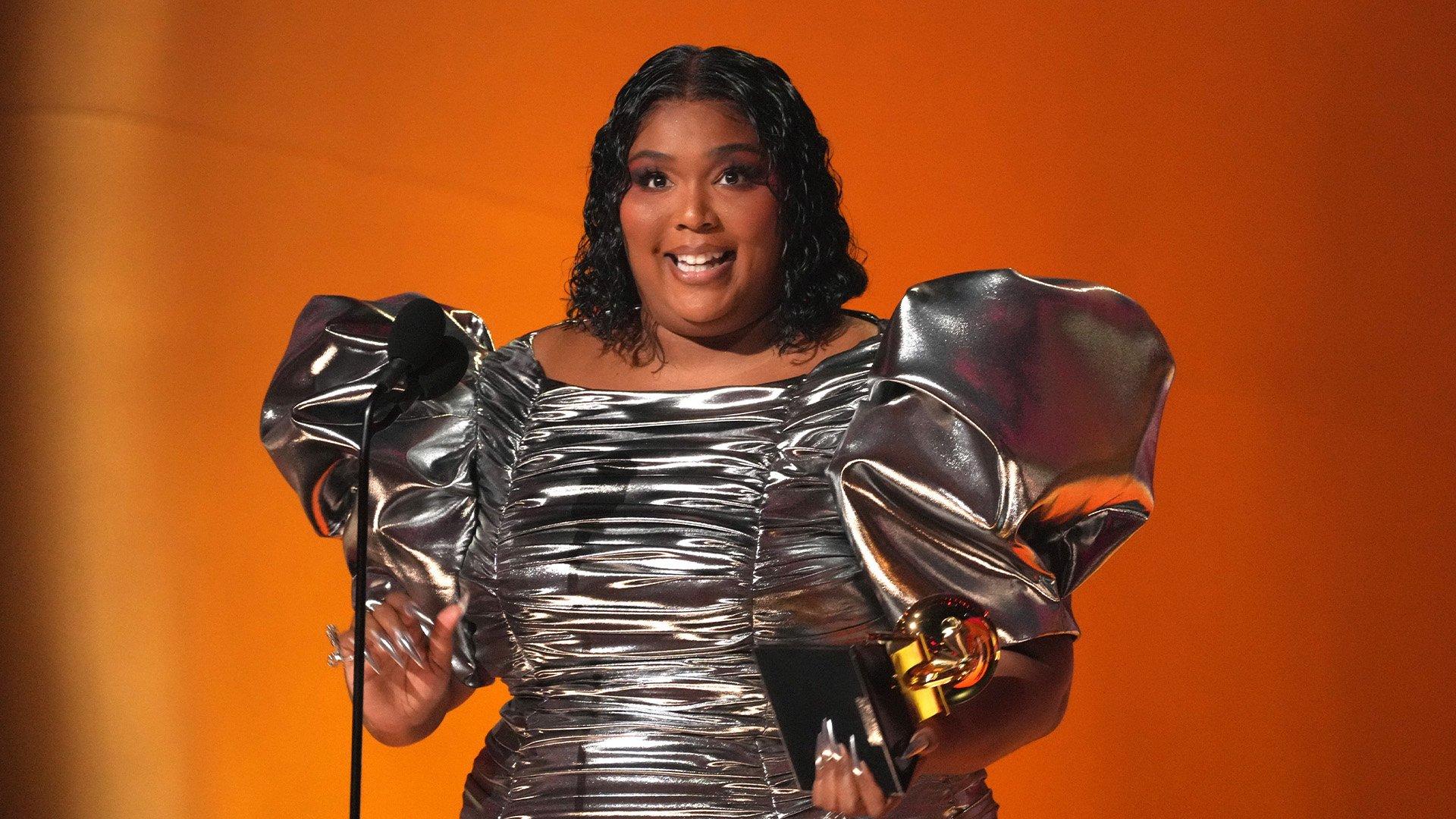
Photo: Kevin Mazur/Getty Images for The Recording Academy
video
GRAMMY Rewind: Lizzo Thanks Prince For His Influence After "About Damn Time" Wins Record Of The Year In 2023
Watch Lizzo describe how Prince’s empowering sound led her to “dedicate my life to positive music” during her Record Of The Year acceptance speech for “About Damn Time” at the 2023 GRAMMYs.
Since the start of her career, four-time GRAMMY winner Lizzo has been making music that radiates positive energy. Her Record Of The Year win for "About Damn Time" at the 2023 GRAMMYs proved that being true to yourself and kind to one another always wins.
Travel back to revisit the moment Lizzo won her award in the coveted category in this episode of GRAMMY Rewind.
"Um, huh?" Lizzo exclaimed at the start of her acceptance speech. "Let me tell you something. Me and Adele are having a good time, just enjoying ourselves and rooting for our friends. So, this is an amazing night. This is so unexpected."
Lizzo kicked off her GRAMMY acceptance speech by acknowledging Prince's influence on her sound. "When we lost Prince, I decided to dedicate my life to making positive music," she said. "This was at a time when positive music and feel-good music wasn't mainstream at that point and I felt very misunderstood. I felt on the outside looking in. But I stayed true to myself because I wanted to make the world a better place so I had to be that change."
As tracks like "Good as Hell" and "Truth Hurts" scaled the charts, she noticed more body positivity and self-love anthems from other artists. "I'm just so proud to be a part of it," she cheered.
Most importantly, Lizzo credited staying true to herself despite the pushback for her win. "I promise that you will attract people in your life who believe in you and support you," she said in front of a tearful audience that included Beyoncé and Taylor Swift in standing ovation, before giving a shout-out to her team, family, partner and producers on the record, Blake Slatkin and Ricky Reed.
Watch the video above for Lizzo's complete acceptance speech for Record Of The Year at the 2023 GRAMMYs. Check back to GRAMMY.com for more new episodes of GRAMMY Rewind, and be sure to tune into the 2024 GRAMMYs on Sunday, Feb. 4, airing live on the CBS Television Network (8-11:30 p.m. LIVE ET/5-8:30 p.m. LIVE PT) and streaming on Paramount+ (live and on-demand for Paramount+ with SHOWTIME subscribers, or on-demand for Paramount+ Essential subscribers the day after the special airs).
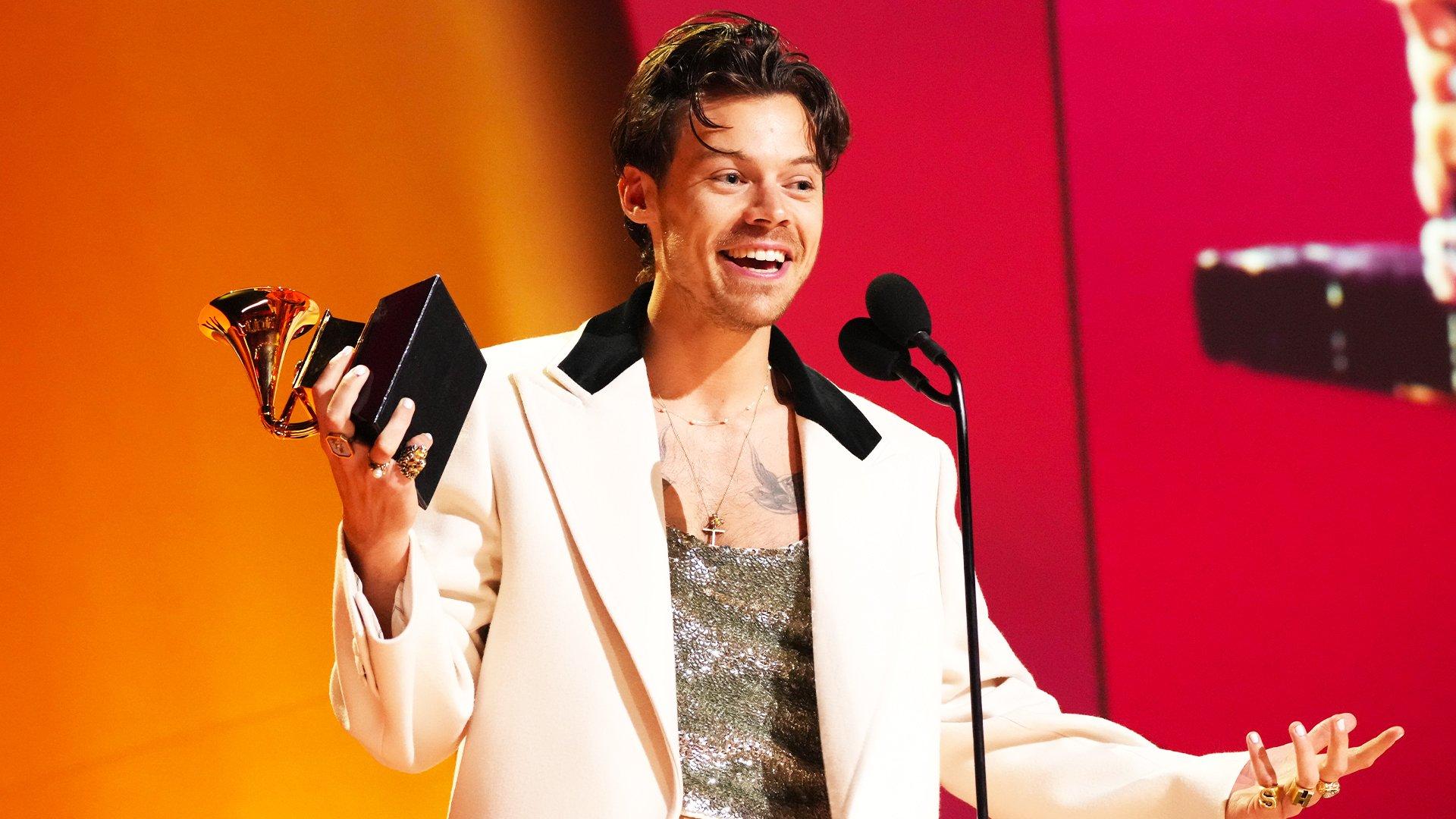
Photo: Kevin Mazur
video
GRAMMY Rewind: Harry Styles Celebrates His Fellow Nominees (And His Biggest Fan) After Album Of The Year Win In 2023
Revisit the moment Harry Styles accepted the most coveted award of the evening for 'Harry's House' and offered a heartfelt nod to his competitors — Beyoncé, Adele, Lizzo, Coldplay and more.
After a wildly successful debut and sophomore record, you'd think it was impossible for Harry Styles to top himself. Yet, his third album, Harry's House, proved to be his most prolific yet.
The critically acclaimed project first birthed Styles' record-breaking, chart-topping single, "As It Was," then landed three more top 10 hits on the Billboard Hot 100 with "Late Night Talking," "Music for a Sushi Restaurant" and "Matilda." The album and "As It Was" scored Styles six nominations at the 2023 GRAMMYs — and helped the star top off his massive Harry's House era with an Album Of The Year win.
In this episode of GRAMMY Rewind, revisit Styles' big moment from last year's ceremony, which was made even more special by his superfan, Reina Lafantaisie. Host Trevor Noah (who will return as emcee for the 2024 GRAMMYs) handed the mic to Lafantaisie to announce Styles as the winner, and the two shared a celebratory hug before Styles took the mic.
"I've been so, so inspired by every artist in this category," said Styles, who was up against other industry titans like Beyoncé, Adele, Lizzo and Coldplay. "On nights like tonight, it's important for us to remember that there is no such thing as 'best' in music. I don't think any of us sit in the studio, making decisions based on what will get us [an award]."
Watch the video above to see Harry Styles' complete acceptance speech alongside his collaborators Kid Harpoon and Tyler Johnson. Check back to GRAMMY.com for more new episodes of GRAMMY Rewind, and be sure to tune into the 2024 GRAMMYs on Sunday, Feb. 4, airing live on the CBS Television Network (8 -11:30 p.m. LIVE ET/5-8:30 p.m. LIVE PT) and streaming on Paramount+ (live and on demand for Paramount+ with SHOWTIME subscribers, or on demand for Paramount+ Essential subscribers the day after the special airs).
